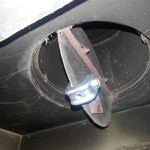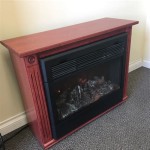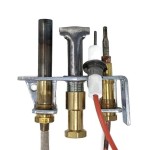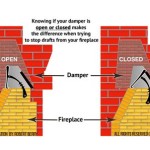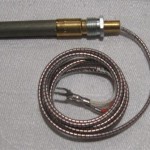How To Get Paint Off a Fireplace Insert
The presence of unwanted paint on a fireplace insert can detract from its aesthetic appeal and potentially hinder its functionality. Whether the paint was inadvertently applied during a room renovation or is the result of a poorly executed previous attempt to enhance the insert's appearance, removing it requires careful consideration and a strategic approach. Understanding the type of paint, the material of the fireplace insert, and the appropriate removal techniques is crucial for achieving a satisfactory outcome without causing damage to the appliance.
Fireplace inserts come in various materials, including cast iron, steel, and ceramic. Each material reacts differently to paint removal methods and chemicals. Abrasive techniques suitable for cast iron, for example, might scratch or damage a ceramic insert. Similarly, harsh chemical strippers could corrode certain metals. Thorough assessment of the insert's material is the essential first step.
The type of paint also significantly impacts the removal process. Water-based latex paint is generally easier to remove than oil-based or epoxy paints. In addition, heat-resistant paints, often used on fireplaces themselves, require specialized removal techniques due to their durable formulation.
Key Considerations Before Starting
Before commencing any paint removal procedure, safety precautions must be prioritized. Adequate ventilation is crucial, especially when using chemical strippers. A well-ventilated area will help to dissipate fumes and minimize the risk of inhalation. Wearing appropriate personal protective equipment (PPE), such as gloves, safety glasses, and a respirator, is equally important to protect skin, eyes, and respiratory system from potentially harmful chemicals and debris.
Furthermore, it is essential to protect the surrounding area. Drop cloths, plastic sheeting, and painter's tape should be used to shield nearby walls, floors, and furniture from drips, splatters, and dust generated during the removal process. Taking the time to properly prepare the workspace will prevent further unwanted damage.
Before applying any paint removal method to the entire fireplace insert, a small, inconspicuous test area should be chosen. This will allow to assess the effectiveness of the chosen method and ensure it does not damage or discolor the insert's surface. Closely observe the test area for any adverse reactions, such as etching, discoloration, or warping, before proceeding further.
Methods for Removing Paint
Several methods can be employed to remove paint from a fireplace insert, each with its own advantages and disadvantages. The best method depends on the type of paint, the material of the insert, and the extent of the paint coverage. These methods can be broadly categorized as chemical, mechanical, and thermal.
Chemical Strippers: Chemical paint strippers work by softening the bond between the paint and the surface, allowing the paint to be scraped or wiped away. These strippers are available in various formulations, including liquid, gel, and paste. Gel and paste formulations are particularly useful for vertical surfaces, as they are less likely to drip. When choosing a chemical stripper, consider its compatibility with the insert's material. Some strippers contain harsh chemicals that can corrode or damage certain metals. Always read and follow the manufacturer's instructions carefully. Apply the stripper evenly to the painted surface, allowing it to dwell for the recommended time. Use a scraper or putty knife to remove the softened paint. Multiple applications may be necessary for stubborn paint layers. After removing the paint, neutralize the surface according to the stripper manufacturer's instructions to prevent any residual chemicals from reacting with subsequent coatings or finishes.
Mechanical Methods: Mechanical methods involve physically removing the paint using tools such as scrapers, wire brushes, sandpaper, and power tools. Scrapers and putty knives are effective for removing loose or flaking paint. Wire brushes can be used to remove paint from textured surfaces or intricate details. Sandpaper is useful for smoothing the surface after removing the bulk of the paint. Power tools, such as orbital sanders and wire wheels, can expedite the process, but they require caution and skill to avoid damaging the insert's surface. When using mechanical methods, start with the least abrasive option and gradually increase the aggressiveness as needed. Always work in a well-ventilated area to minimize dust inhalation.
Thermal Methods: Thermal methods utilize heat to soften the paint, making it easier to scrape away. Heat guns and steam strippers are commonly used for this purpose. Heat guns generate hot air that softens the paint. Hold the heat gun at a safe distance from the surface, moving it slowly and evenly to avoid overheating and scorching the material. Use a scraper to remove the softened paint as it heats up. Steam strippers use steam to penetrate the paint layers, loosening the bond between the paint and the surface. Steam strippers are generally considered safer than heat guns, as they do not generate as much heat. However, they can take longer to work. When using thermal methods, ensure the area is well-ventilated and wear appropriate heat-resistant gloves.
Specific Techniques for Different Scenarios
The best approach to paint removal often depends on the specific combination of paint type, insert material, and the extent of the paint coverage. Certain situations may require a tailored approach.
Removing Latex Paint from Cast Iron: Latex paint is generally easier to remove than other types of paint. For cast iron inserts, a combination of scraping, wire brushing, and sanding can often be effective. Start by scraping off any loose paint with a putty knife or scraper. Then, use a wire brush to remove any remaining paint residue. Finally, sand the surface with medium-grit sandpaper to smooth out any imperfections. If the latex paint is particularly stubborn, a chemical stripper designed for latex paint may be necessary.
Removing Oil-Based Paint from Steel: Oil-based paint is more durable and resistant to removal than latex paint. For steel inserts, a combination of chemical stripping and mechanical methods is often required. Apply a chemical stripper specifically designed for oil-based paint, following the manufacturer's instructions. After the paint has softened, use a scraper or putty knife to remove it. A wire brush can be used to remove any remaining residue. If necessary, use a power tool, such as an orbital sander, to remove any stubborn paint or smooth out the surface. Be cautious when using power tools on steel, as it can be easily scratched or damaged.
Removing Heat-Resistant Paint: Heat-resistant paints are formulated to withstand high temperatures, making them particularly difficult to remove. Specialized chemical strippers designed for heat-resistant paints are often required. These strippers typically contain stronger solvents and may require longer dwell times. Follow the manufacturer's instructions carefully and wear appropriate PPE. In some cases, a combination of chemical stripping and thermal methods may be necessary. Apply the chemical stripper, allow it to dwell, and then use a heat gun to further soften the paint before scraping it away.
Post-Removal Procedures
After removing the paint, it is essential to thoroughly clean and prepare the surface for any desired refinishing or protective coatings. This stage ensures longevity and appearance.
Cleaning: The fireplace insert should be cleaned with a suitable cleaner to remove any remaining paint residue, chemical stripper residue, or dust. The choice of cleaner depends on the material of the insert and the type of residue present. For cast iron and steel inserts, a degreasing cleaner is often effective. For ceramic inserts, a mild soap and water solution is usually sufficient. Thoroughly rinse the surface with clean water and allow it to dry completely. This step is crucial for ensuring proper adhesion of any subsequent coatings or finishes.
Refinishing/Coating: Depending on the desired aesthetic and the material of the insert, a refinishing or protective coating may be applied. Cast iron inserts can be painted with high-temperature paint to restore their original appearance or to create a new look. Steel inserts can be powder-coated or painted for added protection against rust and corrosion. Ceramic inserts typically do not require refinishing, but a sealant can be applied to protect the surface from stains and scratches.
Inspection: After completing the paint removal and refinishing process, thoroughly inspect the fireplace insert for any signs of damage, such as cracks, corrosion, or warping. Address any issues promptly to prevent further damage and ensure the safe and efficient operation of the fireplace. If any significant damage is detected, consult a qualified fireplace technician for professional assessment and repair.

How To Strip Paint From Brick Fireplace My Alternate Life

How To Strip Paint From Brick Fireplace My Alternate Life

Removing Paint From A Brick Fireplace Pt 1 Salt Rook

How To Strip Paint From Brick Fireplace My Alternate Life

How To Strip Paint Without Chemicals Kt

How To Re A Cast Iron Fireplace

Painted Fireplace Insert Step By Tutorial Prodigal Pieces

How To Spray Paint A Brass Fireplace Insert Erfly House

Fireplace Makeover Spray Paint Magic

How To Paint A Brick Fireplace Young House Love
Related Posts

